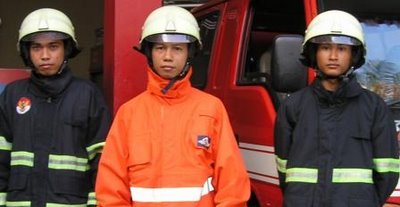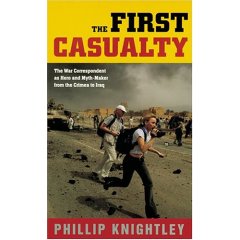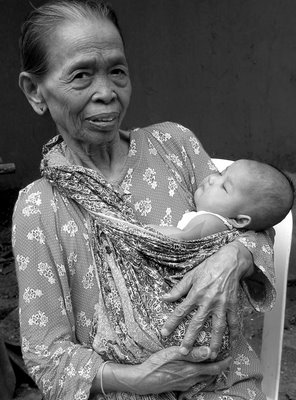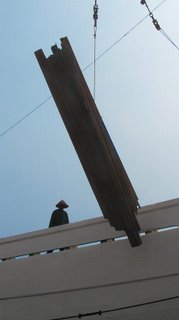Teaching to fight
By ANDREW GREENE
October 23, 2006
Books aren’t just for learning anymore. Hardcovers and paperbacks along with pens, scissors, pencils, chairs, and desks are being turned into weapons in some American schools.
Recent attacks in
In
“What we are teaching here is for the children to not allow the predator to take control,” Robin Browne, a major with the British Army, who helped design the training, was quoted on freerepublic.com as having said. “They actually become the superior, the dominant party in the room, and it is actually the gunman who becomes the prey. If you have got 15 sixth, seventh and eighth graders, they can be an incredibly effective weapon."
In
Republican Bill Crozier was quoted by Associated Press as saying, "People might think it's kind of weird, crazy. It is a practical thing; it's something you can do. It might be a way to deflect those bullets until police go there."
Crozier, according to the AP, has promised that if he is elected he will mandate that used textbooks be stored under every student’s desk for self-defense purposes. In Crozier’s video, pistol bullets were stopped by a single book while the rifle bullets were able to penetrate two books.
Concern about school safety is not solely an American concern.
Although there is not the same history of school violence in
In
Benefits
Antonious Sunaryo, the head police officer of Pasar Minggu in
Martial arts and self-defense trainer Yuri Amadin agrees, “Yes, but we must be realistic. For real life situations the basic skills of the three Olympic combat sports, boxing, wrestling, and judo will need to be taught. Once the concepts of punching, kicking, clinching, and ground grappling have been learned the children can graduate to impact and blade weapons.”
Amadin says that six to nine months would be required before the students were skilled enough to move onto weapons, “People think it is easy to learn how to defend against a weapon. They’re completely wrong. Try it yourself, give a five year old a marker and ask them to try to ‘stab’ and ‘slice’ you. You’ll end up with ink all over yourself.”
“The children have got to get the concepts of fighting down,” the American trained instructor continued. “Many people are technique collectors. They collect techniques as if they were collecting electronic gadgets. But when they are faced with a real confrontation they fall apart. People need to focus on the concepts, not the techniques.”
Likewise, Indonesian mother Rafi Hayati likes the idea of her nine-year-old daughter being taught self defense. “I’d love for her to learn it for protection. I worry. I’ve already taught Tika how to kick and punch a man in the penis. It would also be good for her to learn how to remain calm in stressful situations.”
Age restrictions
Students of different ages will require different training according to the experts. Officer Sunaryo says that children from kindergarten to grade four should not be taught any fighting skills. Instead they can learn other self-defense skills.
“The younger children need to learn how to avoid attacks and how to survive them, if need be,” he said. “We need to teach them how to recognize dangerous situations and how to scream as loud as they can and find a person of authority when they need help.”
Amadin agrees that the children below 14 years of age should not be taught too many attacking skills. “They can’t be taught submissions, such as bone breaking bone, but they can learn defensive skills and positional concepts so that they will be able to avoid attacks and hold and control the attacker until help arrives.”
“Once someone reaches 15 or so they can be taught submissions and other more aggressive techniques,” Amadin said. “These can be added to the foundation that the students have previously built.”
Though targeting younger learners Sunaryo too believes in building upon previously acquired skills. “In grade five the students can begin to learn fighting skills.”
The coaching team
Sunaryo, Amadin, and Hayati all emphasized that parents and the police need to be involved in students’ self-defense training.
Amadin said, “In order to teach some advanced techniques a parent’s permission is needed. Also, parents are very important in helping the students steer clear of irresponsible behavior with the fighting skills they are learning.”
“Parents must instill good values by being role models: teaching the kids not to have excuses and reasons as a victim does, but instead giving them the ownership of a victor.”
Hayati would like the parents to be notified of any such training, saying, “I understand that this may be controversial for some families, so the school should let the parents know about the training and not make it mandatory.”
Sunaryo says that the police are instrumental to the success of this training. He believes that the police know how to spot the patterns of kidnappers and other criminals. The police, he says, are able to help children and their parents acquire this skill.
Amadin would like to see police involvement too, believing that they would be able to help the students become familiar with various firearms. “If we are to train students how to overcome a person with a gun, we need to teach them how guns operate. They need to not freeze up when they see one and they need to understand how they fire and where the safeties are.”









